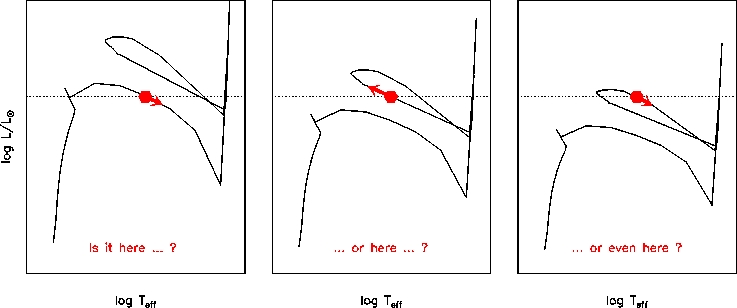Introduction
The appearance of the B[e] supergiant phase is not predicted by current stellar evolution theories. Whether this phase occurs during the redward or blueward evolution of the massive stars is thus not known. Possible locations along a schematic evolutionary track are indicated in the following figure: (i) during the redward evolution right after the main-sequence (left panel), (ii) during the blueward evolution along the blue-loop (middle panel), and (iii) during the redward evolution along the blue-loop (right panel).
In addition, it is not clear at all, whether all massive stars have to go through such a B[e] supergiant phase during which the stars seem to suffer from strong, non-spherically symmetric mass loss, or whether only stars with very special initial conditions (in terms of, e.g., rotation velocity, magnetic fields) will evolve through such a B[e] supergiant phase. Also not known is the evolutionary connection of B[e] supergiants with other variable post-main sequence phases of massive stars like the Luminous Blue Variables, or the Yellow Hypergiants.
The best known sample of B[e] supergiants is located in the Magellanic Clouds, while the usual distance issue renders it difficult to obtain useful luminosity estimates to classify a Galactic B[e] star definitely as B[e] supergiant. Hence, in the Galaxy we are still dealing with B[e] supergiant candidates.
In the following, a brief summary of the latest research results on individual B[e] supergiant stars and candidates is provided.